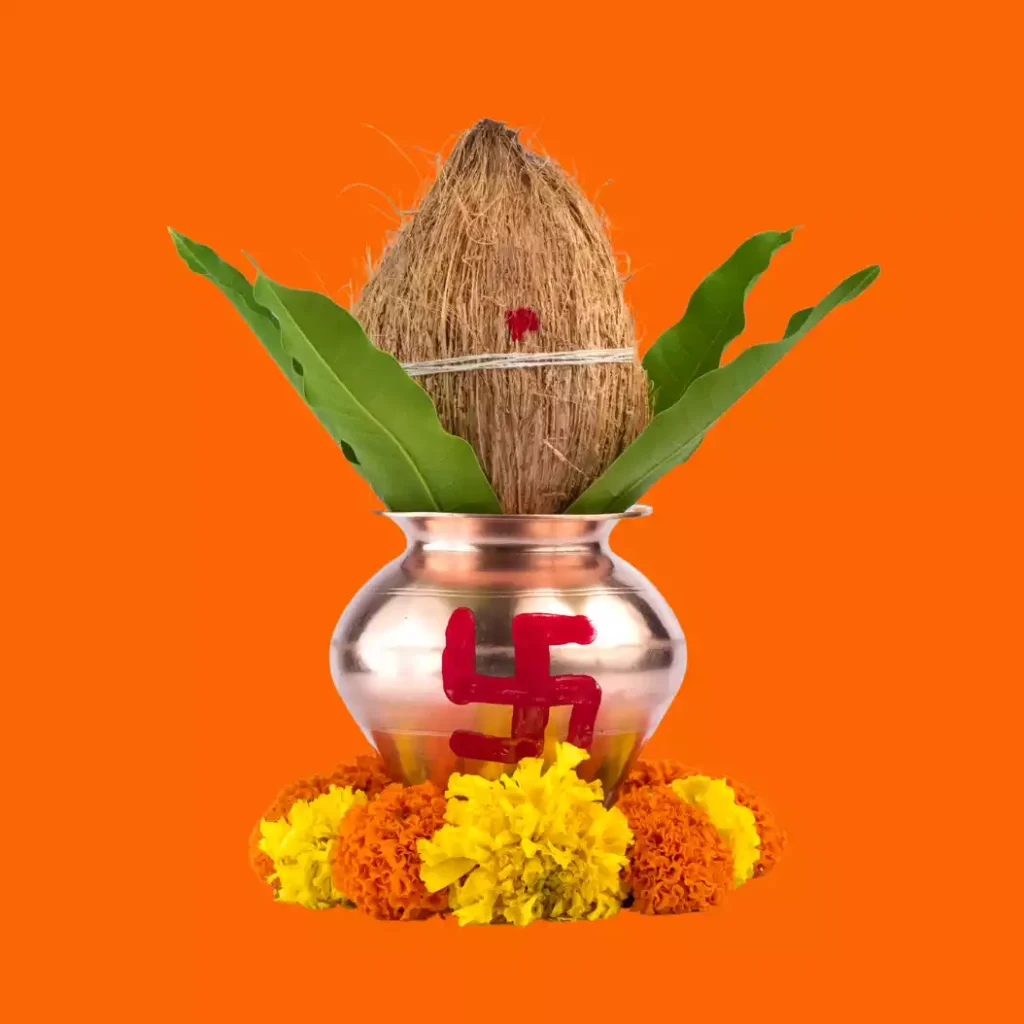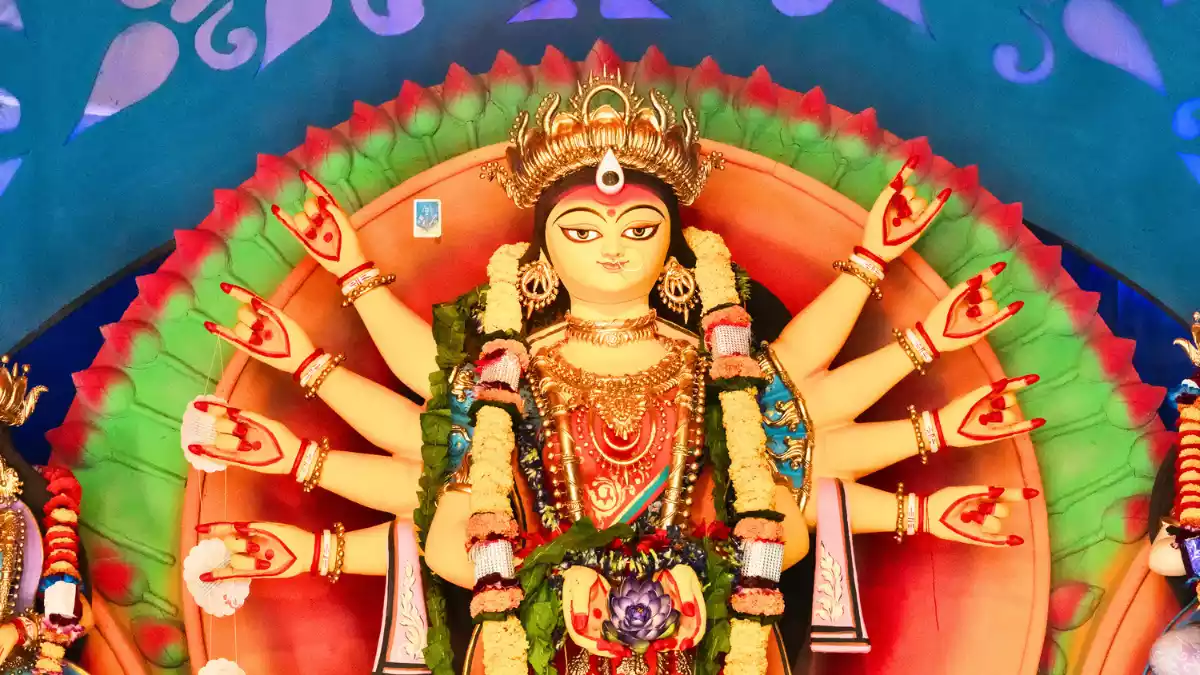Learn how to perform Durga Puja at home with simple steps and devotion. This detailed guide explains all rituals, items needed, and puja procedures in easy language.
Perfect for families who want to celebrate Navratri or Durga Puja peacefully and spiritually at home. Discover the benefits, setup process, and mantras to make your home puja complete and meaningful.
How to Perform Durga Puja at Home
Durga Puja is one of the most important Hindu festivals celebrated across India, especially in West Bengal, Odisha, Assam, and Bihar.
It marks the victory of Goddess Durga over the demon Mahishasura. While big pandals and public celebrations are common, many devotees also perform Durga Puja at home.

If you want to invite Maa Durga’s blessings into your home this year, you can easily do it with devotion, proper planning, and some basic knowledge of the rituals.
Here’s a complete guide on how to perform Durga Puja at home in a simple and heartfelt way.
Benefits of Doing Durga Puja at Home
1. Brings peace and positivity into the home.
2. Protects from negative energies.
3. Strengthens family bonding through collective worship.
4. Helps you feel spiritually connected with the divine.
What You Need for Durga Puja at Home
Before beginning the puja, ensure you have all the necessary items. Here’s a table listing the essential things you will need:
| Puja Items | Purpose |
|---|---|
| Durga idol or photo | For worship |
| Kalash (pot) | Symbol of purity and power |
| Mango leaves | Used to cover the kalash |
| Sindoor | Marital prosperity |
| Ganga Jol | Purification, spiritual cleansing |
| Coconut | Placed over the kalash |
| Red cloth | To cover the kalash or idol |
| Rice, betel leaves, supari | Offerings to the goddess |
| Flowers and garlands | Decoration and offering |
| Sweets and fruits | Bhog (offering) for Maa Durga |
| Camphor, incense sticks | For aarti |
| Ghee lamp (diya) | For lighting and aarti |
| Puja thali | To keep all offerings and items |
| Panchamrit (milk, honey, curd, sugar, ghee) | For Abhishek or offering |
Step-by-Step Durga Puja Vidhi at Home
Performing Durga Puja at home creates a powerful spiritual connection with the Divine Mother. Follow these easy steps to invite blessings into your household.
Step 1: Preparation (1 Day Before)
- Clean your home, especially the puja area
- Bathe the idol with Ganga water/milk (if possible)
- Set up the altar facing East or North
Step 2: Clean the House and Setup the Puja Area
Start by cleaning the house, especially the place where you will perform the puja. Choose a quiet and clean corner, preferably facing east or north. You can use fresh water for fulfill this purpose.
Step 3: In the Morning
1. Should take a bath and wear clean clothes (traditional preferred)
2. Spread red cloth on the altar
3. Place Durga idol/photo in center
Place a red cloth on a wooden platform or table and set the idol or image of Goddess Durga on it.
Step 4: Place the Kalash
Fill the kalash with water, place mango leaves around its opening, and set a coconut on top. Tie a red thread (kalava) around the kalash. This represents purity and strength and is placed near the idol.

Focus on:
- Fill Kalash with water, add betel nut, a coin, and mango leaves
- Cover Kalash with a coconut wrapped in red cloth
Step 5: Sankalp – Make a Spiritual Promise
Take a few rice grains in your hand, close your eyes, and take a sankalp (vow). You may pray silently to Maa Durga, expressing your intention to perform this puja with love and devotion.
Step 6: Offer Flowers, Sweets, and Bhog
Offer fresh flowers, fruits, sweets, and other items on the thali. Light incense sticks and a diya. You can offer panchamrit or even just water if you wish to keep it simple.

Also placed a light ghee lamp and incense sticks.
Step 7: Main Puja Rituals
1.Offer flowers to Goddess Durga’s feet
2. Apply sindoor to idol’s forehead
3. Offer fruits/sweets (bananas, laddoos preferred)
4. Recite Durga Chalisa or 108 names of Durga
5. Meditate for 5-10 minutes visualizing divine light
Step 8: Chant Durga Mantras and Aarti
Chant simple Durga mantras such as:
“Om Dum Durgayei Namaha”
You can also sing Durga Aarti or play it in the background. Ring the bell during the aarti and wave the diya in front of the idol in a circular motion.
Step 9: Read Durga Saptashati (Optional)
If time permits, you may read parts of the Durga Saptashati, especially the chapters about Devi’s victory over evil. Otherwise, you can read Durga Chalisa, which is shorter and easier to recite.
Read Durga Saptashati [Meaning, Importance & More] – Full Guide
Step 10: Do Pradakshina
After completing the aarti, walk around the idol or image three times while praying. This shows respect and devotion.
Step 11: Distribute Prasad
Once the puja is over, distribute the sweets and fruits offered to the goddess as prasad to all family members.

Step 12: Visarjan at Last
On the final day (Dashami):
- Offer betel leaves and coconut
- Gently wipe the idol with clean cloth
- Carry idol to flowing water (or symbolic bowl)
Essential Tips for Home Puja
1.Timing: Perform during Brahma Muhurta (4-6 AM) or Sandhya (evening twilight)
2. Fasting: Optional – consume fruits/milk if observing
3. Mindset: Focus on devotion, not perfection
4. Duration: 30-45 minutes daily during Navratri
5. Children: Involve them in flower offering or aarti
Tips to Make Your Home Puja More Devotional
- Keep a calm and focused mind.
- Dress in clean and traditional clothes.
- Maintain silence or soft devotional music during the rituals.
- Include your family members to make it a collective prayer.
Best Time to Perform Durga Puja at Home
You can perform Durga Puja during Navratri, especially on Saptami, Ashtami, or Navami. However, you can also worship her on Fridays or any auspicious day if you miss the main dates.
Common Mistakes to Avoid
Conclusion
Performing Durga Puja at home is not just a ritual; it is an expression of love and faith towards Maa Durga. With simple arrangements, pure intentions, and a devoted heart, you can easily invite her blessings into your life. Whether you follow the full tradition or a simplified version, what matters most is your devotion and respect for the goddess.

 Join Now
Join Now

